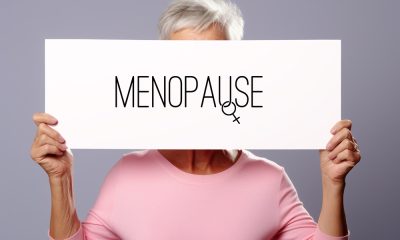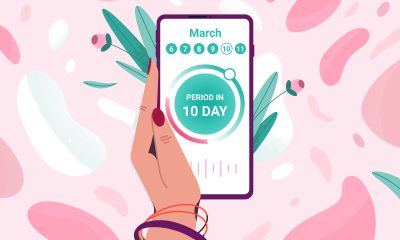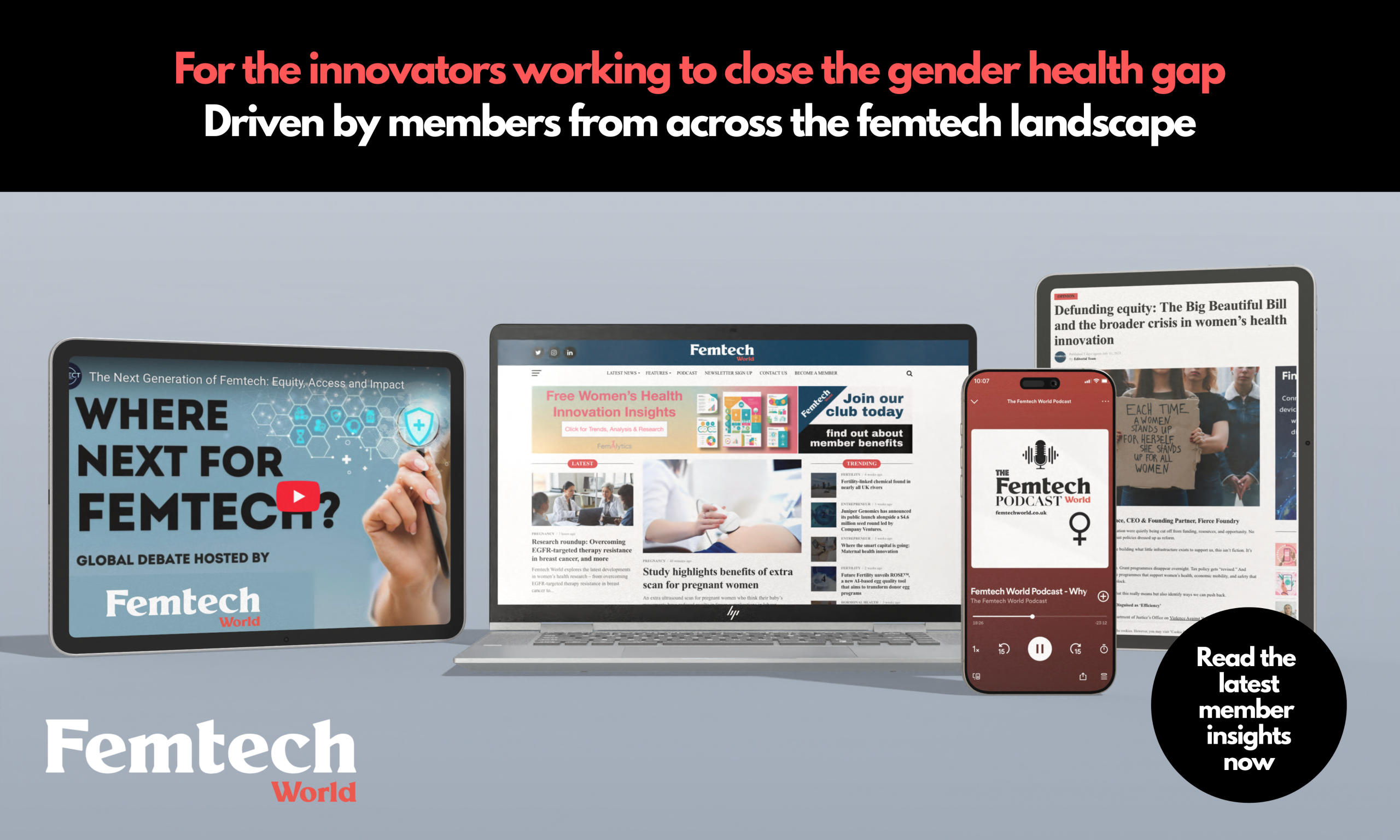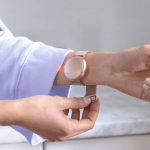Menopause
UK design company to launch AI menopause management app
The app will use machine learning to collect data on body temperature, energy levels, stress and sleep

The UK design company Morrama has announced the development of an AI-powered management app to support women going through the menopause.
Morrama, the company behind the Elvie Catch breast milk collector, aims to help women manage menopause symptoms and access “tailored” supplements and recommendations.
Taking inspiration from fertility tracking apps and 3D print technology, Luma is an app that uses smartwatch and sensor data combined with manual inputs to build up a user’s profile as they go through menopause.
According to developers, machine learning takes data including temperature, energy levels, stress and sleep to prompt questions to capture cognitive and emotional wellbeing.
This information would be used to “tailor” the ingredients that would be then 3D-printed into pills. The supplements would be part of a subscription-based programme.
“As part of our newly launched Morrama Lab, we’ve been looking into the health and wellness of typically overlooked markets,” says Morrama founder and creative director, Jo Barnard.
“With the recent ‘menopause leave’ trial rejected by ministers in England, it’s clear the women going through this experience have been one of the most neglected markets.
“Our Luma concept aims to support the wellbeing of those women and give them their power back.”
The supplements would include a combination of black cohosh for the management of hot flashes, lion’s mane to reduce brain fog and ginseng for increased libido.
There would also be the option – where legal – of THC which mimics aspects of anandamide, an endocannabinoid that helps regulate body temperature.
“As with fertility or nutrition, every woman’s menopause experience is different,” Barnard explains.
“Luma uses machine learning to build up an understanding of each user’s symptoms and tailor the formula accordingly, and 3D printing them into one simple ‘magic compound’ makes the ingredients easy to integrate into a daily routine.”
Hormonal health
Dame Lesley Regan vows to ‘revamp’ UK’s Women’s Health Strategy – “we’ve let women and girls down”

The Women’s Health Ambassador for England, Dame Lesley Regan, has promised to overhaul the government’s 10-year strategy, as she revealed the scale and cost of the UK’s gender health gap three years on.
Speaking at Women’s Health Week in London earlier this month, Regan revealed that Health Secretary Wes Streeting has tasked her with “revamping” the government’s Women’s Health Strategy, following the publication of his 10-year plan to reform the NHS.
Promising to “rise to the challenge”, Regan also hinted at plans to streamline pathways for innovators, to fast-track solutions into the NHS, and said that the system must stop “admiring the problem” and start redesigning care around women’s lives.
“We are the only country I know in the world with a national health service free at the point of delivery,” said Regan, during her closing keynote speech on Thursday 16 October.
“Yet we’ve got so complacent about the important things in women’s health that we’ve really let girls and women down.”
Major health challenges for women
A Professor of Obstetrics and Gynaecology at Imperial College London, Regan painted a stark picture of the state of women’s health in 2025.
As well as huge gaps in care for women and girls experiencing menstrual symptoms such as PMS and menopause, women face a raft of wider health challenges.
Contraception has become increasingly difficult to access, resulting in almost half of all pregnancies being unplanned, and as well as having the highest teenage pregnancy rate in Europe, abortion rates are also rising among women over 32.
Meanwhile, cervical screening uptake is at an all-time low, with marginalised women at greatest risk despite cervical cancer being preventable with HPV vaccination and smear tests.
The number of high-profile maternity scandals in recent years reflects a flawed system, where the annual amount spent on litigation costs by NHS Resolution exceeds the allocated total funding for maternity care.
Maternal mortality is three times higher in Black women and twice as high in Asian women, with suicide now a leading cause of direct maternal death, one in four among teenage girls.
According to Regan, many of those are known to mental health services.
“In the last maternal mortality report, every single woman who died was known to mental health services,” she said.
“I have to conclude that we let them down.”
Regan also highlighted gender disparities and inequalities in chronic health conditions, which often go undetected or misdiagnosed in women.
Conditions like Parkinson’s and Alzheimer’s, for example, present differently in females, who are twice as likely to be diagnosed with dementia.
And while women are twice as likely to die from cardiovascular disease as from cancer (52 per cent deaths annually), they are often diagnosed later than men, due to a lack of understanding of their symptoms.
Major causes of morbidity and mortality, frailty and osteoporosis, also disproportionately affect women.
More than a fifth of females (21 per cent) are affected, compared to six per cent of men, with women typically experiencing twice as many fractures.
There are vast geographical inequalities, too.
Every year, 500,000 fragility fractures occur throughout the UK, but less than 53 per cent of the population can access Fracture Liaison Services in the community, with quality and standards varying significantly.
“Until very recently, most politicians across the globe viewed women’s health as maternity,” said Regan.
“But women spend most of their lives post-reproductive, and we have never really catered for that… We’ve got to look after women’s health across their life course.”
Delivering on women’s health hubs
The Women’s Health Strategy, first published in 2022, was shaped by the largest ever call for evidence in a Department of Health consultation, gathering a total of 100,000 responses. Out of these, 84 per cent of women reported not being listened to by healthcare professionals.
In response, the strategy set out a six-point plan which promised to address these inequalities, including through the establishment of women’s health hubs.
Regan believes hubs are crucial for delivering on the promises of the 10-year plan, including shifting from hospital to community care, moving from analogue to digital, and pivoting from treatment to prevention.
Successful case studies from hubs in some of the most deprived areas of England have demonstrated early benefits of these hubs, including reduced secondary-care referrals, shorter waiting lists, improved access and equity, workforce retention, more specialised training, and fewer adverse outcomes.
But not all Integrated Care Boards across England are offering all core services.
Delivering more Women’s Health hubs is part of a five-point plan moving forward, according to Regan, which also includes improving maternity and menstrual care, tackling inequalities and funding more research.
“We’ve continued to admire the problem, but that’s what we’ve got to stop,” Regan said.
“The most important thing to be able to do things better is that you have to be willing to do it differently.”
A “front door” for change
Building on this, Regan expressed her “frustration” at some of the challenges faced by startups trying to bring solutions to market, hinting at plans for a hub or a “big front door” to streamline regulatory approval processes.
“Almost every time I talk to entrepreneurs or investors, they tell me the same story: ‘We’ve been knocking on the door of government, and we always get pushback’,” she said.
“I want to paint that door bright yellow so you’ll never miss it, and when it opens, I want people to be welcoming. We need to stop sending people off to navigate endless pathways. There should be a hub that sorts it.”
Benefit to the UK economy
There’s a strong economic argument for the UK government to deliver on these promises.
Global life expectancy is increasing, and while women typically live longer than men, they spend more of their lives in poor health.
A woman will experience ill health for an average of nine years throughout her life, impacting her ability to be present and/or productive at home, in the workforce, and in the community.
Regan shared analysis from McKinsey Health Institute, which shows that more than half of the women’s health gap affects women during their working-age years, significantly impacting the UK’s GDP.
At least 56 per cent of Disability-Adjusted Life Years stem from conditions which impact women differently or disproportionately.
Taking this into account, closing the gender health gap in the UK could generate more than £36bn in annual GDP by 2040, a figure that could exceed $1 trillion globally.
A 2024 report published by the NHS Confederation estimates that the economic cost of absenteeism due to severe period pain and heavy periods, alongside endometriosis, fibroids and ovarian cysts, is nearly £11 billion per year, while 60,000 women are thought to be unemployed due to menopause symptoms.
The findings suggest that for every additional £1 invested in obstetrics and gynaecology per woman in England, the return on investment is estimated at £11.
Dutch collaboration
Regan has now been invited to the Netherlands to help officials there develop their own Women’s Health Strategy.
In conversation with Dutch Minister Judith Tielen, Regan highlighted the need for international collaboration to accelerate wider global change when it comes to women’s health.
The Netherlands is already collaborating across ministerial department’s including employment and social security, with education next.
Tielen shared the outcomes from an initiative at Amsterdam University Medical Centre, which offered free gynaecology consultations to female staff to reduce sick leave.
“Hundreds of women signed up in days, and sickness absence dropped significantly,” she said.
“It’s a societal question, not one for women to solve alone.”
Regan agreed, adding: “We cannot afford for women not to be part of the solution.”
News
Most midlife women with menopause symptoms don’t seek care, research finds

More than 80 per cent of women with menopause symptoms do not seek medical help, despite the impact on daily life, according to new research.
The study surveyed nearly 5,000 women aged 45 to 60 across four Mayo Clinic primary care sites, finding that more than three-quarters had experienced symptoms affecting work productivity and overall wellbeing.
Conducted by the Mayo Clinic, the research found that menopause symptoms remain underrecognised, undertreated and inadequately addressed within the healthcare system, despite the availability of effective treatments.
Lead author Ekta Kapoor is an endocrinologist and menopause specialist at the Mayo Clinic in Rochester.
The researcher said: “Menopause is universal for women at midlife, the symptoms are common and disruptive, and yet, few women are receiving care that could help them.
“This gap has real consequences for women’s health and quality of life, and it’s time we address it more proactively.”
More than one-third (34 per cent) the survey respondents reported moderate to very severe symptoms.
Sleep disturbances and weight gain were among the most common issues, affecting more than half of participants.
Only about one in four women were receiving treatment at the time of the survey.
While some preferred to manage symptoms independently, others said they were too busy or unaware that effective treatments exist.
Without proper treatment, menopause symptoms can negatively affect sleep, mood and cognition, as well as productivity at work and home.
The study noted that women often do not raise menopause-related concerns during medical appointments.
Researchers emphasised the need for strategies to destigmatise menopause care and make it more visible and accessible.
Work is underway to develop questionnaires, digital tools and smartphone apps that help women identify symptoms, learn about treatment options and have more productive discussions with their healthcare professionals.
Dr Kapoor said: “Our goal is to educate women and healthcare professionals about menopause.
“By making it easier to recognise and understand symptoms, we can close the gap between need and care – and help midlife women live healthier, more fulfilling lives.”
Hormonal health
FDA approves new menopause drug to treat hot flashes and night sweats

The FDA has approved elinzanetant, a new non-hormonal treatment for menopause that reduces hot flushes and night sweats.
Clinical trials in the US, Europe and Israel found the drug significantly reduced both the frequency and severity of hot flushes while improving women’s sleep and quality of life.
The approval follows successful results from the double-blind Oasis trials, led by UVA Health and other international research partners.
The studies enrolled postmenopausal women aged 40 to 65 with moderate to severe hot flushes, randomly assigning them to receive either 120mg of elinzanetant daily for 26 weeks or a placebo for 12 weeks followed by 14 weeks of the drug.
Women who received the treatment reported rapid improvements, with statistically significant reductions in the frequency and intensity of hot flushes within the first week.
By week 12, sleep quality and overall quality of life had also improved across both trials.
JoAnn V. Pinkerton is director of midlife health at UVA Health and US lead for the Oasis II trial.
Pinkerton said: “More than a third of women experience disruptive menopausal symptoms that can persist for more than a decade, significantly impacting work, home and quality of life.
“Many symptomatic menopausal women continue to suffer without treatment and support.
“With the FDA approval of elinzanetant, women will have access to a new, safe and effective therapy for relief of hot flushes and night sweats.
“Due to its dual receptor antagonism, the studies also showed improvements in sleep and mood.”
Hot flushes are caused by a drop in oestrogen levels during menopause, which affects how the brain regulates body temperature.
Hormone therapy remains the most effective treatment, but it can cause side effects such as breast tenderness, bloating, headaches or spotting.
In rare cases, long-term hormone use, particularly oral therapy, can raise the risk of blood clots, strokes or certain cancers such as uterine cancer if oestrogen is used without a uterine antagonist — a drug that blocks its effects on the womb.
Some women cannot take hormone therapy due to contraindications such as a history of blood clots or oestrogen-sensitive cancers.
Elinzanetant works through dual receptor antagonism, blocking two receptors involved in temperature regulation and other menopausal symptoms.
The most common side effects seen in the trials were mild headache and fatigue. No serious side effects were reported.
Pinkerton said: “I am excited that women who can’t or choose not to take hormone therapy will have access to elinzanetant, which is an effective and tested, FDA-approved therapy for bothersome symptoms.
“It’s critical that we listen to our patients to understand exactly what they are experiencing and then help them get the support they need, tailored to their individual needs.”

 News1 week ago
News1 week agoDozens of women report suffering painful burns after using Always sanitary towels

 Menopause4 weeks ago
Menopause4 weeks agoFDA plans to revise black box warning on menopause hormone therapies

 News2 weeks ago
News2 weeks agoWomen’s health innovations recognised in TIME’s Best Inventions 2025

 News3 weeks ago
News3 weeks agoAI-powered women’s health companion Nexus launches in UK

 Fertility4 weeks ago
Fertility4 weeks agoScientists turn human skin cells into eggs in IVF breakthrough

 Insight2 weeks ago
Insight2 weeks agoCutting through the noise in femtech – key takeaways from Women’s Health Week 2025

 Mental health3 weeks ago
Mental health3 weeks agoMenstrual cycle affects women’s reaction time, study finds

 News4 weeks ago
News4 weeks agoDaily pill could delay menopause ‘by years,’ study finds






























